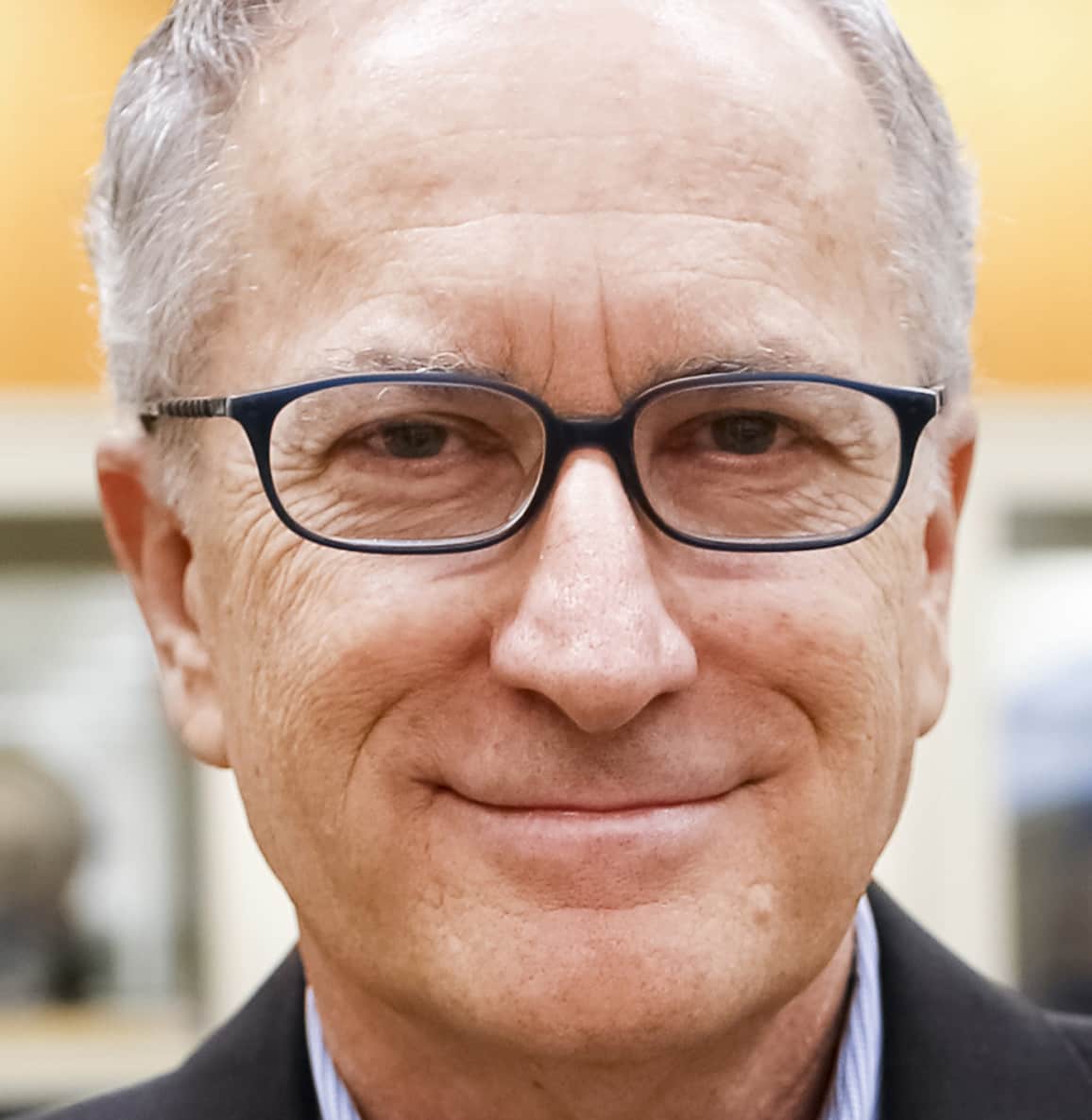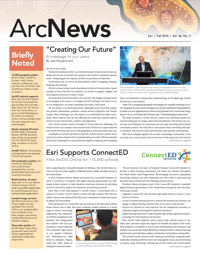With the remarkable announcement by President Barack Obama and Esri president Jack Dangermond of Esri’s $1 billion gift of GIS software to support the US ConnectED educational initiative, the stage has now been set for truly transformative advancements in American schools and their ability to improve geographic and GIS literacy for all elementary and secondary students. [ConnectED promotes Internet connectivity and educational technology.]
It was a great pleasure to share the excitement and profound significance of Esri’s gift to K–12 schools with Jack immediately following President Obama’s public announcement in May of this year. I would like to thank Jack for including me in the glow of that moment and for the chance to discuss the enormous opportunities this presents for students everywhere and for the future of GIS.
Now, however, comes the big task of implementing support programs that can maximize the benefits and ensure the success of this extraordinary new development. We urge our colleagues from the geography, GIS, and education communities to join with us to implement integrated support programs for schools, teachers, and students as they receive their ArcGIS Online software licenses beginning this fall. These activities, of course, should be coordinated with Esri’s own programs and should enhance and extend existing support networks.
Given the short time to prepare, we believe that support capacity that can “hit the ground running” with proven formal and informal GIS learning and teaching infrastructure and programs already in place will be key elements in enabling teachers and students to fully realize the educational, social, and economic impacts of Esri’s investment in K–12 schools.
The Association of American Geographers (AAG) and its 10,000 members, through their substantial educational and organizational capacities, are strongly positioned and willing to assist Esri and the Obama Administration in attaining the vision of broad scale, fundamental improvements in the quality of science, technology, engineering, and mathematics (STEM) education by engaging teachers and students in the power and perspectives of geography, GIS, and geospatial technology. Such support will help students gain geographic perspectives and skills that will broaden opportunities in postsecondary education and better prepare them for a wider range of high paying and rewarding careers. This will further secure the capabilities and innovativeness of the nation’s work force in an increasingly competitive and interdependent global economy.
We believe that the following four core areas of support activity are instrumental to ensuring the success of the Esri-ConnectED GIS-enabled teaching and learning initiative.
1. Teacher Professional Development
Improving the preparation of teachers is essential for ensuring that geospatial data and technology are widely adopted and implemented in STEM classrooms. Aspiring teachers will need comprehensive training and preparation in geographical, technological, and pedagogical knowledge areas so they enter the work force as highly capable geospatial educators. AAG, working in collaboration with leading STEM teacher education programs and organizations, has a national project ready for implementation that is designed to advance teacher preparation in three key ways:
- Creating web-based, easily accessed geospatial resources, materials, and tools (RMTs) that introduce teachers to fundamental geographic and spatial concepts for effective teaching with geospatial data and technologies. RMTs will be built using ArcGIS Online data and technologies to present compelling examples of geospatial problems and illustrate for teachers how to develop inquiry-based lessons that support STEM education standards in every state.
- Preparing teacher educators to use RMTs in their courses, workshops, and other professional development settings serving preservice STEM teachers. Emphasis will be placed on the interdisciplinary characteristics of RMTs for fostering the abilities of teachers to support spatial thinking skills and geographic inquiry in STEM classrooms.
- Conducting longitudinal research studies to evaluate the usefulness of RMTs for improving teacher preparation and spatial thinking in STEM education.
2. Curriculum Materials
Although Esri’s provision of cloud-based geospatial data and technology will provide the necessary infrastructure for schools, we know from research that models of teaching and learning where questions and investigations drive learning are not easy for teachers to plan, implement, or evaluate. To assist this process, the AAG proposes to develop curriculum materials with the following features and characteristics.
To meet the professional and practical needs of a large community of STEM educators, the curriculum materials will be aligned with the most recent state and national standards for geography, science, social studies, and math. The AAG has been integrally involved in the development of these standards and has experience in implementing them.
The materials will teach new geospatial analytical and technical skills by engaging students in the practices of geographic inquiry. The materials will convey the importance of geographical knowledge and perspectives for addressing globally significant problems and issues, mirroring the content and design of the modules available through the AAG’s companion website for the National Research Council’s report Understanding the Changing Planet: Strategic Directions for the Geographical Sciences.
The materials will be web based, digital, and modular in format and supported by teacher guides and assessment resources. This has important advantages for educators. Access will be broad and suitable for use on desktop computers, laptops, and mobile devices, and the materials can be used to teach new geospatial concepts and evaluate learning while complementing traditional textbooks and educational resources already in use.
Existing AAG materials that incorporate technologies and activities for collaborative online international learning projects, such as those currently available through the AAG’s Center for Global Geography Education, will be made available for ConnectED schools. Many of these modules already incorporate ArcGIS Online software and data and can be readily updated and adapted to suit a broader range of digital learning activities in STEM classrooms.
The curriculum materials and accompanying assessment resources will draw on the latest research on learning progressions stemming from a current AAG project funded by the National Science Foundation. That project, GeoProgressions, is investigating the ways young learners develop increasingly sophisticated understanding and comprehension of fundamental geographic and spatial concepts. The results of the research will be applied to create learning progressions for GIS, maps, geospatial technology, and spatial thinking across K–12 grade bands and STEM curriculum standards.
3. Mentoring Networks and Career Guidance
Another critical element of this support program will be supplementing Esri’s own existing mentoring network with the highly diverse and talented AAG membership of more than 10,000 geographic scientists and professional educators. This represents a rich national resource from which schools can receive guidance on how to most effectively build a robust learning program for GIS education. Many AAG members specialize in GIS education, including online geospatial education, and are actively involved in schools through programs such as Advanced Placement Human Geography and the Geographic Alliance Network.
This mentoring program also will provide schools with career guidance and counseling, drawing on a considerable array of educational and outreach resources developed in recent years by the AAG. The AAG will also partner with organizations such as the National Council for Geographic Education to supply schools with specialized expertise on GIS education and pedagogy.
4. Informal Education
The fourth pillar of a proposed support program focuses on the considerable potential of engaging teachers, students, and parents in geographic learning with geospatial technologies through informal, extracurricular activities. For 15 years, the AAG has led the My Community, Our Earth: Geographic Learning for Sustainable Development (MyCOE) program in partnership with dozens of private and public sponsors, including Esri.
Through the MyCOE model, the AAG can further support Esri’s initiative for GIS in schools in the following ways:
- Lead a teacher-training program using the road-tested and proven MyCOE workshop model.
- Build international school partnerships and networks that connect US students with their peers in different countries for collaborative projects in sustainable development.
- Provide schools with ready-made geospatial activities and kits for after-school learning projects supporting geographic investigations into local community issues.
- Utilize the in-place, ready-to-go MyCOE Infrastructure to provide immediate online programmatic and project-oriented support for K–12 students and teachers as they adopt ArcGIS Online for project work in their own communities.
The MyCOE existing infrastructure can rapidly be scaled up to address the needs of the recipients of Esri’s extraordinary gift to the schools all across the US.
In conclusion, we at the AAG stand ready to assist as needed to ensure the success and maximize the value of this extraordinary donation to the approximately 115,000 K–12 schools throughout the US. We are honored to support this remarkable gift by Esri and invite those throughout the geography, GIS, and education communities to join together to seize this unique opportunity to strengthen geography and GIS education in the K–12 classrooms of our nation.


